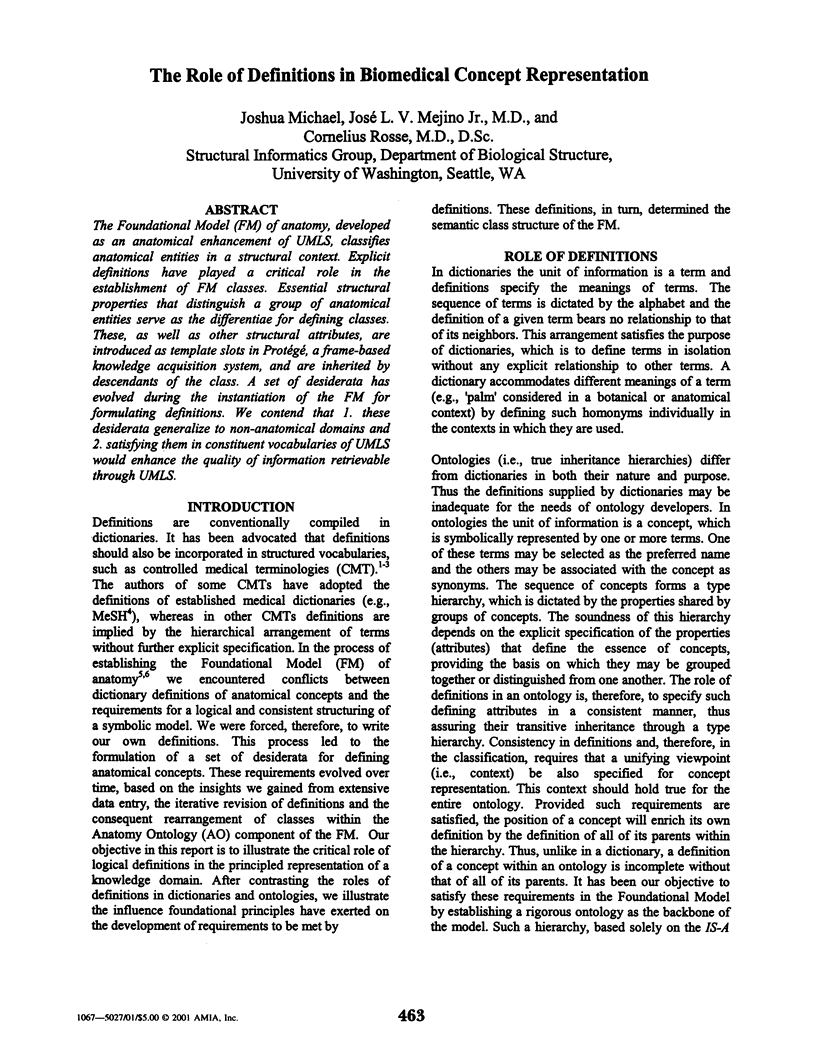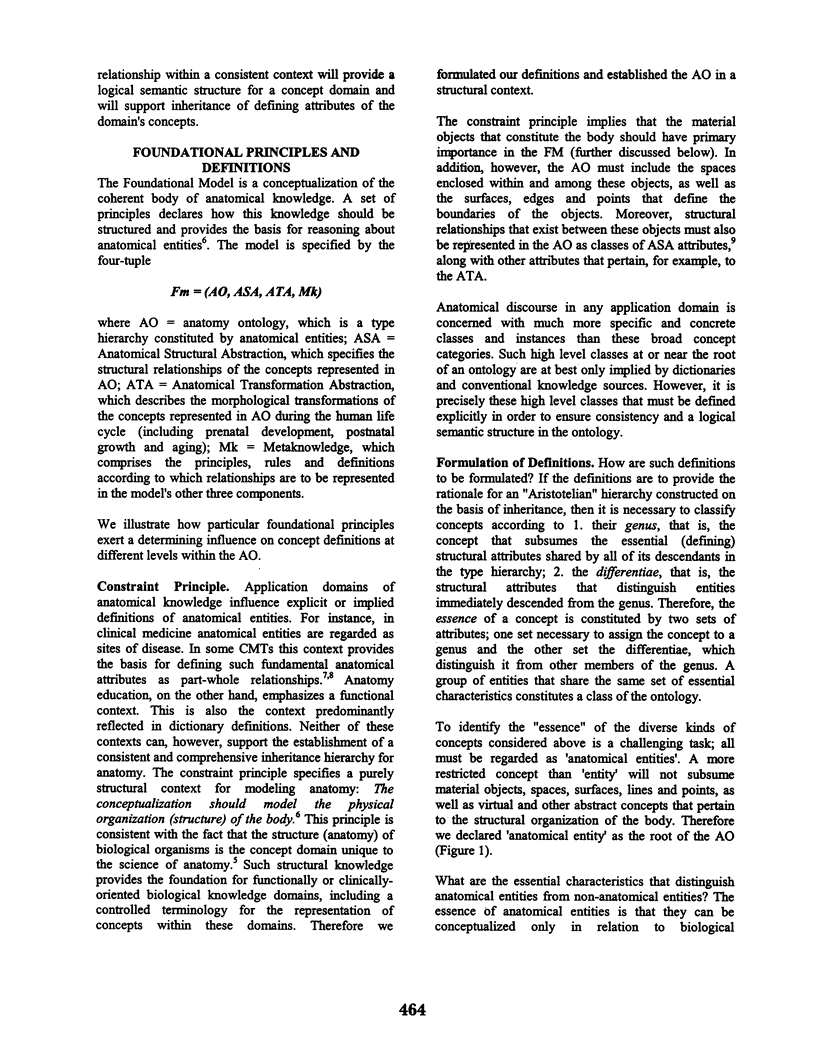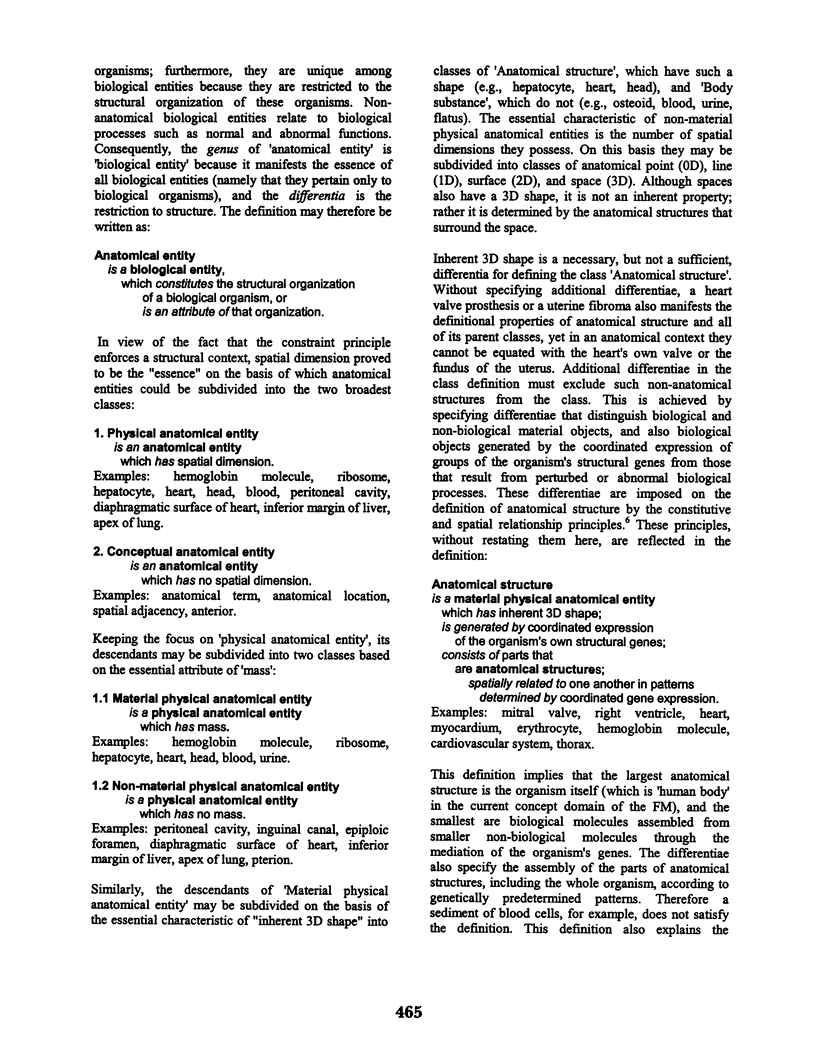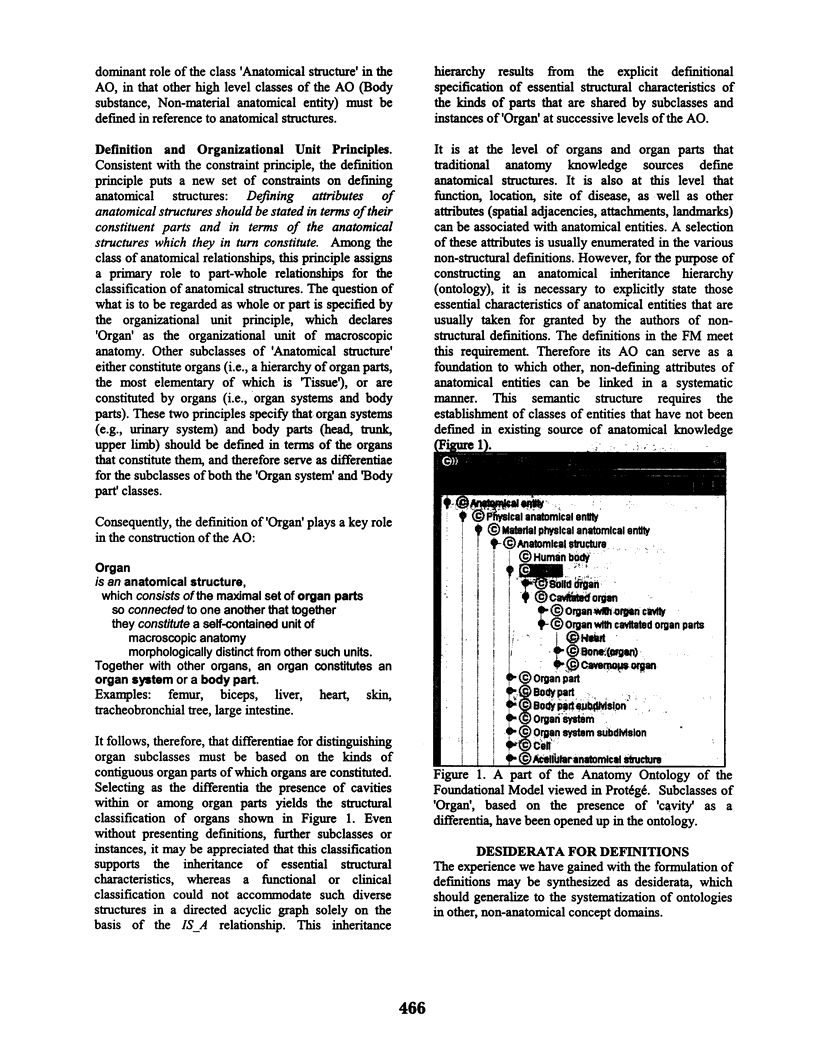Abstract
The Foundational Model (FM) of anatomy, developed as an anatomical enhancement of UMLS, classifies anatomical entities in a structural context. Explicit definitions have played a critical role in the establishment of FM classes. Essential structural properties that distinguish a group of anatomical entities serve as the differentiate for defining classes. These, as well as other structural attributes, are introduced as template slots in Protégé, a frame-based knowledge acquisition system, and are inherited by descendants of the class. A set of desiderata has evolved during the instantiation of the FM for formulating definitions. We contend that 1. these desiderata generalize to non-anatomical domains and 2. satisfying them in constituent vocabularies of UMLS would enhance the quality of information retrievable through UMLS.
Full text
PDF




Selected References
These references are in PubMed. This may not be the complete list of references from this article.
- Campbell K. E., Das A. K., Musen M. A. A logical foundation for representation of clinical data. J Am Med Inform Assoc. 1994 May-Jun;1(3):218–232. doi: 10.1136/jamia.1994.95236154. [DOI] [PMC free article] [PubMed] [Google Scholar]
- Campbell K. E., Oliver D. E., Spackman K. A., Shortliffe E. H. Representing thoughts, words, and things in the UMLS. J Am Med Inform Assoc. 1998 Sep-Oct;5(5):421–431. doi: 10.1136/jamia.1998.0050421. [DOI] [PMC free article] [PubMed] [Google Scholar]
- Cimino J. J. Desiderata for controlled medical vocabularies in the twenty-first century. Methods Inf Med. 1998 Nov;37(4-5):394–403. [PMC free article] [PubMed] [Google Scholar]
- Rogers J., Rector A. GALEN's model of parts and wholes: experience and comparisons. Proc AMIA Symp. 2000:714–718. [PMC free article] [PubMed] [Google Scholar]
- Rosse C., Mejino J. L., Modayur B. R., Jakobovits R., Hinshaw K. P., Brinkley J. F. Motivation and organizational principles for anatomical knowledge representation: the digital anatomist symbolic knowledge base. J Am Med Inform Assoc. 1998 Jan-Feb;5(1):17–40. doi: 10.1136/jamia.1998.0050017. [DOI] [PMC free article] [PubMed] [Google Scholar]
- Rosse C., Shapiro L. G., Brinkley J. F. The digital anatomist foundational model: principles for defining and structuring its concept domain. Proc AMIA Symp. 1998:820–824. [PMC free article] [PubMed] [Google Scholar]
- Schulz S., Romacker M., Hahn U. Part-whole reasoning in medical ontologies revisited--introducing SEP triplets into classification-based description logics. Proc AMIA Symp. 1998:830–834. [PMC free article] [PubMed] [Google Scholar]


